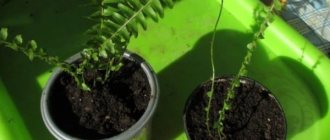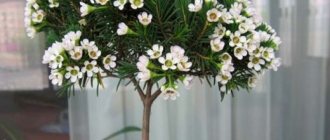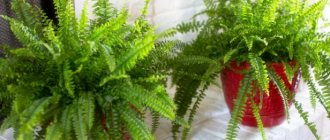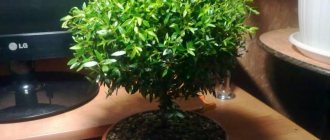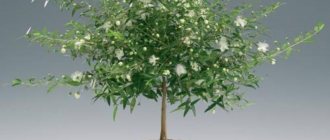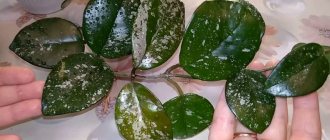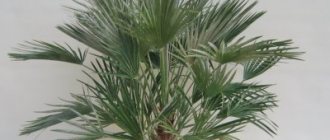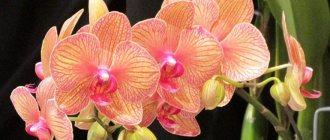- July 27, 2019
- Houseplants
- Ekaterina Komisarova
In apartments and offices you can often see small trees, the branches of which are covered with white fluffy leaves that exude a unique aroma. They are called "myrtle". These plants began to be grown in ancient times, but they have not lost their relevance today. This is due to its high decorative characteristics, unpretentiousness and ease of maintenance. In addition, the trees are great for creating bonsai-style compositions. Let's figure out how to grow myrtle at home and learn about all the key features of its content. Once you plant it in your home, you will understand why it is so popular.
general information
According to legends, myrtle (care at home does not take much time) grows in the Garden of Eden. Adam managed to take the twig with him when God cast him out for disobedience. He planted it in the Mediterranean, where, due to the favorable climate, the tree took root. There are also references to this culture in Greek mythology. The wreath of the goddess of beauty Aphrodite was made of myrtle. Therefore, it is a symbol of love and devotion. Nowadays, in some countries, the bride's bouquet necessarily contains a sprig of a fragrant plant.
In the wild, the greatest concentration of myrtle is observed in subtropical climates, which are characterized by warmth and high humidity. It is represented by shrubs and low trees, the maximum height of which is three meters. They can be found in South America, Asia and Africa.
The myrtle houseplant (growing and caring for it will not cause difficulties even for beginners) is widespread throughout the world. Its branches are covered with small, pointed leaves that are bright green in color. During the flowering period, white or pink buds appear, which grow singly or in groups. The shape and number of petals may vary. It all depends on the specific variety, of which there are quite a few today. After the flowering period ends, small berries appear in place of the buds. The leaves contain essential oils that not only emit a pleasant aroma, but also have beneficial health properties. They also purify the air, which improves a person’s overall well-being and reduces the risk of developing colds.
Types of myrtle with photos and names
Common myrtle
In home floriculture, the most commonly grown myrtle (Myrtus communis) has a short branched trunk covered with exfoliating scales of red-brown bark. The leaves are green, oval-lanceolate, glossy, leathery, with a pleasant aroma. The flowers are white or pale pink with prominent stamens, the fruits are red-black berries. Blooms from June to August. Popular cultivars: “Tarentina” - a compact bush with berries that are smaller than those of the original form, but there are significantly more of them than those of the common myrtle; The variegated variety has a creamy-white pattern on green leaves.
Myrtle lush
Also interesting is the lush myrtle (Myrtus apiculata) - a bush or tree with peeling brown bark, under which the trunk is creamy white. The leaves are dark green, elliptical, matte. White single flowers bloom in July-August, black-red fruits are edible.
Myrtle hequen
Tree with shiny green leaves with wrinkled edges. This species is the most resilient of the myrtles.
Kinds
All over the world people grow indoor myrtle. It is a dwarf tree no more than sixty centimeters high. Thanks to its compact size, it does not take up much space in the apartment and fits among flowers without any problems. As for varieties, there are not very many of them. There are even fewer indoor plants on sale due to poor supplies. Therefore, to find a suitable look for yourself, you will have to make a lot of effort.
If you decide to start breeding these trees, then the best option is to do it by cuttings. There are a large number of species that are grown at home, but the following are the most popular among gardeners:
- Hamedafne - also known as bog myrtle. Care at home is very simple, no matter where the tree grows - indoors or outdoors. This is due to the fact that it is a frost-resistant variety, so it can withstand low temperatures well. The life cycle is five years. The juice contains a potent toxin that can be fatal to pets.
- Tarentina is a dwarf form of the common myrtle. Its advantage is long and abundant flowering. When grown in open ground, it grows and develops quickly. The slightly elongated oval leaves can reach a length of 1.5 centimeters.
- Variegant is perhaps one of the most common species. Many gardeners choose it for its high decorative value. The leaves are white, with a purple tint. They have a very bright, rich aroma, and also reduce the concentration of carbon dioxide in the room and purify the air.
- Hymenea is another popular species. People call it “the bride’s happiness.” In the natural environment they are represented by shrubs up to 5 meters high, but at home they do not grow above one meter. During the flowering period, branches are cut from it and used to decorate wedding bouquets.
It is interesting that the varieties listed above are a variety of common myrtle. Therefore, they have common characteristics and require a similar approach to care and breeding.
Indoor varieties
Of all the existing species, common myrtle is mainly used in pot culture. It is compact, quite fast growing, and highly decorative. Based on the species, breeders have developed several hybrid varieties. Of greatest interest are five varieties of common myrtle.
- Boetica. Compared to other varieties, it has larger and wider leaves. Easily formed, forms a lush crown. Often used to create bonsai-style compositions.
- Pumila. Compact variety with small, glossy, dark green leaves.
- Glanleam Gold. A variegated variety with unusual leaf color. The main color is dark green. There is a golden border along the edge of the leaf.
- Microphylla. Compact variety. The height does not exceed 60 cm. Young leaves are light, becoming darker with age.
- Latifolia. The hybrid variety is distinguished by rounded leaves, unusual for myrtle. The bush grows quickly and easily takes on any shape.
Myrtle branches are considered a symbol of Peace, harmony, and pleasure. In ancient times, the plant was an obligatory component of the bride's wedding wreath.
Indoor myrtle is valued not only for its decorative properties. Fragrant leaves and flowers release large amounts of phytoncides into the air. The substances purify the air, have antimicrobial and antibacterial effects, and help normalize the emotional background.
Content Features
The historical homeland of myrtle (care at home involves the creation of a certain microclimate, so it is classified as a heat-loving plant) is Africa. The optimal temperature is from 22 to 24 degrees. During the hot period, it is best to keep trees in shaded areas, since due to prolonged exposure to direct sunlight there is a high risk of getting burned. It is recommended to ventilate the room frequently to provide the plant with sufficient fresh air. But you should not leave it in drafts, as this can lead to the development of certain diseases.
In winter, myrtles feel better at cool temperatures, but it should not be below 10 degrees. If you live in a city apartment and it is not possible to create a suitable microclimate, then you should develop a watering and spraying schedule. During the cold season, plants do not require much moisture. One watering per week will be more than enough. When growing trees in a private house for the winter, you can take them to the basement or cellar. In this case, wintering will go well and the flowering period will begin very early. In the summer, myrtle is watered more often. But it is very important not to overdo it too much, since excess moisture can lead to rotting of the root system.
Caring for myrtle after purchase
If you properly care for myrtle after purchase, it will adapt faster and begin to grow its crown. The plant is considered quite capricious and does not tolerate stress, travel, or temperature changes. To prevent myrtle from dying in new conditions, they try to adhere to four rules.
- They don't transplant. Immediately after purchase, the plant is not replanted - they wait until it adapts. Hasty replanting often leads to leaf fall and plant death.
- Increase humidity. If the myrtle looks weakened, the leaves are dull, some of the stems are bare, greenhouse conditions are created for it. The bush is covered with a transparent plastic bag. Every day the bag is removed for a short time and the bush is sprayed. Myrtle can be kept in greenhouse conditions for up to a month.
- Keep in partial shade. During the adaptation period, myrtle is placed in a shaded place, protected from direct sunlight.
- Protect from drafts. Even an adult, healthy bush reacts negatively to drafts. For a young, newly purchased plant, they are unacceptable.
Myrtle is transplanted no earlier than two weeks later. Indications for replanting are a small pot, unsatisfactory condition or poor soil composition. In other cases, it is better to postpone transplantation until spring.
After purchase, immediately inspect the myrtle for the presence of pests. Alarming signs are plaque, yellowing of individual leaves or small dots on them. For prevention, immediately treat the plant with an insecticide by preparing a low concentration solution.
Top dressing
Myrtles are unpretentious plants, but when growing them, you must follow some basic rules. It is very important to provide the trees with sufficient light and moisture. Also, great attention should be paid to feeding. Myrtles begin to bloom very early, so the first fertilizers are applied to the soil in early spring. Complex mineral compositions are best suited for this. But when choosing fertilizers, it is also important to consider the specific goals you want to achieve. If you want to get a lush crown, it is recommended to use fertilizers rich in nitrogen. For abundant flowering, plants are fed with phosphorus mixtures, which are used once a week throughout the summer. In winter, myrtles hibernate, so you need to feed them no more than once every month and a half.
Description
This plant with small ovoid shiny leaves and small white flowers, whose homeland is the Mediterranean, bears dark blue berries. According to ancient legend, Adam brought myrtle from Paradise.
Translated from Greek, “myrtle” means “balm,” so since ancient times people have valued myrtle for its medicinal and decorative qualities - the flowers and leathery leaves of myrtle are rich in essential oils, dried leaves and fruits are used as a spice. By the way, the spice clove is a product of one of the varieties of myrtle.
To reduce colds in children, they are placed on the windowsills in the children's room. Its phytoncides are very useful, and the smell is very pleasant. There is evidence that myrtle reduces allergic reactions in children.
Bloom
The optimal place for growing indoor myrtle is a windowsill facing the south side of the house. This is due to the fact that trees and shrubs of this genus require a lot of light for lush and long-lasting flowering. If this condition is met, but flowers do not appear for a long period of time, then the problem may be as follows:
- too sudden change in daylight hours;
- untimely watering and moistening;
- lack of fresh air;
- recent rejuvenation;
- insufficient amount of nutrients;
- various diseases and harmful insects.
To solve a problem, you must first understand what it is. First of all, it is important to provide proper care for myrtle plants. At home, plants need a special microclimate. If you often do not have the opportunity to water and spray the branches with a spray bottle, then it is worth buying an air humidifier. Also in winter it is necessary to create a source of artificial lighting.
Haircut and pinching
The myrtle tree can be shaped to give it an original shape. But it’s better not to expose the trunk too much; it’s not too strong. Therefore, leave as many side shoots as possible. But if the goal of cultivation is flowering, then you should not get carried away with pinching, otherwise flower buds will not form.
However, it is still better to carry out the shaping. To do this, decide on the desired type of tree. You can form a very squat, thick cushion, or, on the contrary, you can make an airy, lightened crown on a trunk. The desired appearance can be achieved very quickly, in just a couple of years.
But remember that any pruned specimens need to be fed. Various fertilizers for indoor plants without chlorine are suitable for feeding.
Planting and transplanting
This is another important aspect when growing indoor plants that often goes overlooked. Transplant required:
- after purchasing a seedling;
- for young plants - once a year;
- for mature trees - every three to four years.
After you bring myrtle home, it needs to be planted in a new substrate. In this case, it is very important to visually inspect the rhizome and trim off damaged shoots, if any. But you should be very careful not to harm the plant. When transplanting, it is recommended to adhere to the following tips:
- Before digging up a tree, you do not need to water it for several days. This will make it much easier to dig it up without damaging the roots. Simply grab the stem near the base, turn the pot over, and pull lightly.
- Before planting, the rhizome is treated with Kornevin so that the plant quickly adapts to a new place and acclimatizes.
- The myrtle pot should be twice as large as the root system. A drainage system is constructed at the bottom to remove excess moisture. For this you can use expanded clay. It is sprinkled on top with a small layer of soil substrate. You can buy it at any gardening store or make it yourself.
- The tree is carefully lowered into the pot, sprinkled to the edges with soil and lightly compacted. An important nuance: the neck of the plant must not be sprinkled.
- At the final stage, the plant is watered abundantly and placed in a dark place.
To prepare soil for myrtle you will need the following components:
- peat - 30%;
- turf soil - 30%;
- humus - 20%;
- river sand - 20%.
Before planting, it is advisable to pre-treat the soil with special chemicals against pests.
Pests and diseases
Myrtle rarely gets sick. The only disease to be wary of is root rot. The main reasons: fungus, excessive watering during cold wintering, poor drainage, dense soil. Externally it manifests itself as blackening of the ends of young shoots, massive yellowing and falling leaves.
Treatment begins immediately - the myrtle is taken out of the pot and immersed in a fungicide solution for half an hour. The soggy soil is removed, damaged roots are cut off, and planted in new sterile soil.
Pests are a more common problem. Myrtle is often affected by spider mites, whiteflies, and aphids. The main reasons for pest attacks are proximity to infected plants and violation of maintenance conditions. More detailed information about pests is given in the table.
Table - Pests of myrtle
| Pest name | External signs | Ways to fight | Preventive measures |
| Whitefly | – Leaves wither and turn yellow; – small white flies appear on the plant; – green larvae are found on the underside of the leaves; | – Myrtle is washed under a warm shower; – the plant is exposed to the cold for several hours (not lower than 6˚C); – sprayed with insecticide “Admiral” or “Kinmiks” | – Systematically inspect myrtle and neighboring plants; – prophylactically treated with products containing permethrin |
| Spider mite | – Leaves turn yellow and fall off; – a barely noticeable web appears | – Myrtle is treated with soapy water and washed in the shower with clean water; – sprayed with the drug “Aktara”; – put a plastic bag on the myrtle for several days | – Spray the plant regularly; – increase humidity by any means |
| Aphid | – Young shoots curl, become deformed, and become covered with sticky insect secretions | – Curled tops are cut off; – treated with soapy water; – sprayed with a preparation based on permethrin or an infusion of tobacco dust | – Regularly inspect the plant; – when planted outside in summer, protect from ants |
| Shchitovka | – Brownish dense plaques appear on the leaves; – insects leave sticky secretions on the stems; - myrtle withers, dries | – Leaves with scale insects are cut with nail scissors; – insects are removed from the stems with tweezers or a brush; – treat myrtle with a soapy sponge and rinse in the shower; – sprayed with the drug “Actellik” | – Regularly inspect the myrtle; – do not place new plants nearby |
Crown formation
This can be done in two ways - pinching and rejuvenation. The first procedure can be performed at any time, regardless of the season of the year. It will make the crown more lush and decorative, but will lead to a decrease in the number of inflorescences. Pruning myrtle at home will also give the tree the desired shape and will also have a positive effect on the growth of new shoots. If you don’t take any measures at all, the crown will overgrow over time and become like a pyramid. The situation can be corrected by cutting off the top, but in this case the tree will turn into a shrub. Young plants do not need rejuvenation. They must first take root well and get stronger.
The most optimal time for the formation of the myrtle crown is spring. The shoots are cut to a third of their total length. But you must take into account that after pruning the tree will not bloom for a year. You can also rejuvenate in early or mid-autumn, before the first frost.
How to form a myrtle tree at home yourself
The formation of a luxurious crown can be done several times during the spring-summer season, constantly improving and bringing the shape to the ideal. It is better to do the main pruning in the spring before the active phase of the growing season or after flowering, and in the summer only lightly trim non-standard fresh shoots. Lightly pinching young growth to fluff up and expand the crown is also important in early spring.
screenshot_3.jpg
Pliable, plastic young shoots can be freely redirected in the desired direction using a metal wire, but with old, coarsened branches you will have to work hard, smoothly and leisurely guiding them over several months.
screenshot_5.jpg
Flower growers offer a way to form a spherical myrtle tree: the largest, longest branches bend to the sides and are securely fixed with wire. This provides sufficient lighting for the lateral dormant buds, from which young shoots begin to develop and the densely leafy branch is perfectly shaped into a sphere.
screenshot_7.jpg
When starting to form a tree from a young cutting, you need to select the strongest, most beautiful branch in the center of the pot and cut off all extraneous growth. They also ruthlessly remove all side shoots and leaves on the branch itself to the height of the intended trunk, which will thicken and become woody over time. To prevent the center shoot from bending, you can place a support peg (bamboo stick) for it and carefully tie the plant. As soon as the trunk gets stronger and reaches a thickness of 0.5 cm, the support can be removed, now nothing threatens the elastic shoot.
screenshot_6.jpg
Carefully observe the growth of the young tree; any newly appeared lateral branches and leaves in part of the trunk must be cut off in a timely manner, otherwise a shapeless bush will form again.
The myrtle tree tolerates pruning very gently and calmly, but if you do not devote enough time to shaping, it independently turns into a pyramidal bush. If you still set out to form an elegant tree of an original shape, it is better to be patient, because myrtle is a variety that slowly gains green mass, and therefore the result will be noticeable only after 2…3 years, not earlier. But a spectacular, unique tree will delight its owners for decades.
Reproduction
Myrtles can be propagated in two ways - cuttings and seeds. The most common is the first technology. Planting material is prepared in winter or summer. You can use twigs that are left after rejuvenation. Their length should be about 5-8 centimeters. The leaves are removed from the lower part, and the cut is treated with a growth stimulator.
The best substrate for planting cuttings is river sand and moss. If the last component cannot be found, then it can be replaced with leaf soil.
Pots with cuttings are covered with garden film and placed in a cool place until they germinate. Periodically, the plants are opened so they can get some fresh air. As a rule, the first shoots will appear in a month. After rooting, the cuttings will be ready for transplanting into open ground. A sign of this is the formed leaves. The first flowering occurs approximately 3-4 years after planting.
Growing from seeds is considered more time-consuming and labor-intensive. For sowing, use a mixture of peat and fine sand, which is pre-moistened well. The planting material is simply laid out on the soil, after which it is sprinkled with a thin layer and watered abundantly. Next, the containers with seeds are covered with film and placed in a warm room, protected from direct sunlight. The first sprouts, as a rule, can be seen in 10-14 days. As in the previous case, the seedlings will be ready for planting in pots after the first leaves form on the shoots. It can be planted in open ground after the formation of a strong root system.
Myrtle - bonsai
Many people want to have a miniature myrtle tree in a bowl, but before the myrtle trunk gains thickness (from 1.5 cm or more), there is no talk of transplanting it into a bonsai plant. And all the plant material with which the formation work is carried out is called potensai.
An example of such work from Yuri Aleksandrovich Markin:
Bonsai style Sokan
And this is Potensai - the Sokan style “Twin trunks”. 2-3 year old plants grown from rooted cuttings are used. Rearranged from wintering to prepare for spring growing season - pruning and shaping to suit bonsai styles. The skeleton and trunks of the first Potensai specimen are formed in the Sokan style with the application of ligatures and stretch marks. The final height of the workpiece is 28 cm:
Formation work continues. Myrtle has its own subtleties, says Yuri Aleksandrovich - fragile wood and loose bark, although, when broken, it grows together remarkably well.
Before all manipulations, I take a long shower to soak the tissues. When bending vertical and rather thick branches at an angle of 90°, I kind of knead the trunk area between my fingers - I crumple it, like a joint on a finger.
Next, I begin to apply a ligature to the trunk and place the wire on the bent branch. Then, I begin to slowly bend the branch along with the wire wrapped in two turns. You can place a screwdriver under the branch and create a stop at the bend. After bending the branch by more than 90°, I rewind the ligature, fixing the branch in the desired position.
It is also possible to perform a directional bend, i.e. break the branch and wrap it with raffia, and then apply a ligature (the main subtlety is not to break it completely when applying raffia and ligature; skill and a sensitive tactile sense of the material are required).
You can apply another method to thick branches. Make a crescent cut under the branch, at the place of the intended bend, to the middle or 2/3 of the thickness of the branch. The cut is made in thin sections with adjustment (bending and clarifying the position of the branch in the final form); if not enough, then another thin fragment is removed from both sides (such as slices).
Next according to the scheme is wrapping with raffia and applying a ligature. If it is difficult to bend copper wire in insulation with a cross-section of 2.5 mm, then you can apply two wires of 1.5 mm each or several folded wires of an even smaller cross-section - example - photo above (lower left corner), a coil of wire in the photo with myrtle. This wire can be used both for ligatures and for stretch marks.
Most common mistakes
As practice shows, many beginners do not know how to properly care for plants. Because of this, they make the same mistakes, which lead to the following problems:
- blackened leaves - excess moisture caused by too frequent watering;
- yellow leaves - insufficient watering;
- falling leaves - using poor-quality and hard water or too high room temperature;
- dried or curled leaves - too low air humidity or lack of spraying;
- the appearance of a sticky coating on the leaves is a sign of damage by harmful insects.
Most problems are associated with improper care, so they can be avoided by creating a suitable microclimate for the plant, watering it in a timely manner and feeding it regularly.
The best varieties of myrtle trees for the home
The main myrtle representatives living in potted conditions prefer to grow on windows, balconies, loggias facing west or east, where there is always a lot of diffused sunlight, and the air temperature should not exceed 10 ° C in the winter-autumn period and 20 ° C - in spring and summer. These varieties include:
- Alhambra (massive snow-white flowering, fragrant fruits, dense leaves);
- Microphylla (short tree with small leaves);
- Tarentina (abundantly flowering small-leaved, fast-growing tree);
- Boetics (a slow-growing tree with an unusually twisted trunk with cinnamon-colored bark).
screenshot_4.jpg
The most interesting for creativity will be the dwarf variety Microphylla or the original Boetics, because it will be most convenient to form a myrtle tree from slow-growing shoots that easily take the desired shape.

